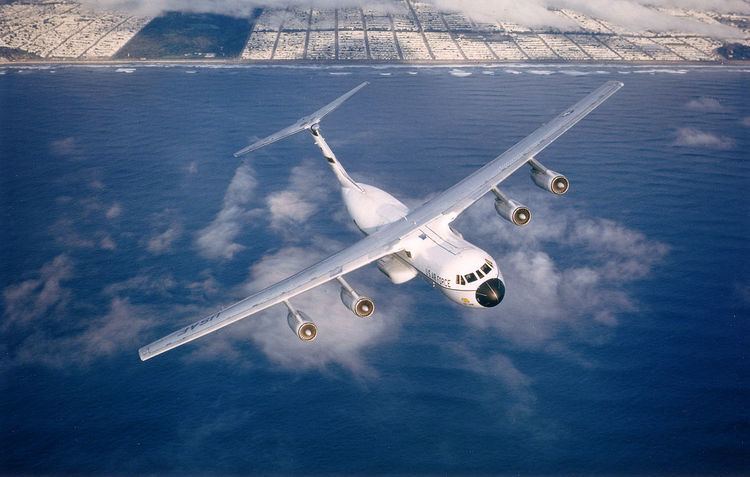Active 1943-1945; 1973-1998 Role Airlift | ||
 | ||
Part of Air Force Reserve Command Engagements European Theater of Operations | ||
The 710th Airlift Squadron is an inactive United States Air Force unit. Its last was assigned to the 349th Operations Group, stationed at Travis Air Force Base, California. It was inactivated on 1 January 1998.
Contents
- Training in the United States
- Combat in the European Theater
- Reserve airlift operations
- Lineage
- Assignments
- Aircraft
- References
The squadron was established as a heavy bombardment squadron and participated in combat in the European Theater of World War II. It was reactivated in the reserves in 1973 and served until 1998 as an associate unit of the 60th Air Mobility Wing.
Training in the United States
The squadron was first activated on 1 May 1943 at Ephrata Army Air Base, Washington as the 710th Bombardment Squadron, one of the squadrons of the 447th Bombardment Group.
The original mission of the squadron was to be an operational training unit. However, by the time the 447th group reached full strength in October it had been identified for overseas deployment and its key personnel were assigned to the Army Air Forces School of Applied Tactics at Orlando Army Air Base, Florida for advanced tactical training. The cadre trained at Brooksville Army Air Field with the 1st Bombardment Squadron, engaging in simulated attacks against Mobile, Charleston and New Orleans. The squadron then trained at Rapid City Army Air Base, South Dakota with the 17th Bombardment Training Wing. In June 1943 the unit moved to Harvard Army Air Field, Nebraska for Phase I training. The unit sailed on the RMS Queen Elizabeth on 23 November 1943 and arrived at the Firth of Clyde on 29 November 1943. The squadron's B-17s began to move from the United States to the European theater of operations in November 1943.
Combat in the European Theater
The squadron was stationed at RAF Rattlesden, England, from December 1943 to August 1945. It flew its first combat mission on 24 December 1943 against a V-1 missile site near Saint-Omer in Northern France.
From December 1943 to May 1944, the squadron helped prepare for the invasion of the European continent by attacking submarine pens, naval installations, and cities in Germany; missile sites and ports in France; and airfields and marshaling yards in France, Belgium and Germany. The squadron conducted heavy bombardment missions against German aircraft industry during Big Week, 20 to 25 February 1944.
The unit supported the invasion of Normandy in June 1944 by bombing airfields and other targets. On D-Day the squadron bombed the beachhead area using pathfinder aircraft.
The squadron aided in the breakthrough at St. Lo, France, and the effort to take Brest, France, from July to September 1944. It bombed strategic targets from October to December 1944, concentrating on sources of oil production. It assaulted marshalling yards, railroad bridges and communication centers during the Battle of the Bulge from December 1944 to January 1945. In March 1945 the group bombed an airfield in support of airborne assault across the Rhine. The unit flew its last combat mission on 21 April 1945 against a marshalling yard at Ingolstadt, Germany.
The 710th redeployed to the United States during the summer 1945. The air echelon ferried their aircraft and personnel back to the United States, leaving on 29 and 30 June 1945. The squadron ground echelon, along with the group headquarters and 708th squadron sailed on the SS Joseph T. Robinson on 1 August 1945, from Liverpool. Most personnel were discharged at Camp Myles Standish after arrival at the port of Boston. A small cadre proceeded to Drew Field, Florida and the squadron inactivated on 7 November 1945.
Reserve airlift operations
The squadron was redesignated the 710th Military Airlift Squadron and activated as reserve associated unit of Military Airlift Command's 60th Military Airlift Wing at Travis Air Force Base, California in the spring of 1973. The squadron flew the active duty wing's Lockheed C-141 Starlifters on worldwide transport mission. In 1992 the squadron provided support to the State of California during the 1992 Los Angeles riots.
The squadron was inactivated in 1998 as part of phaseout of C-141s.
